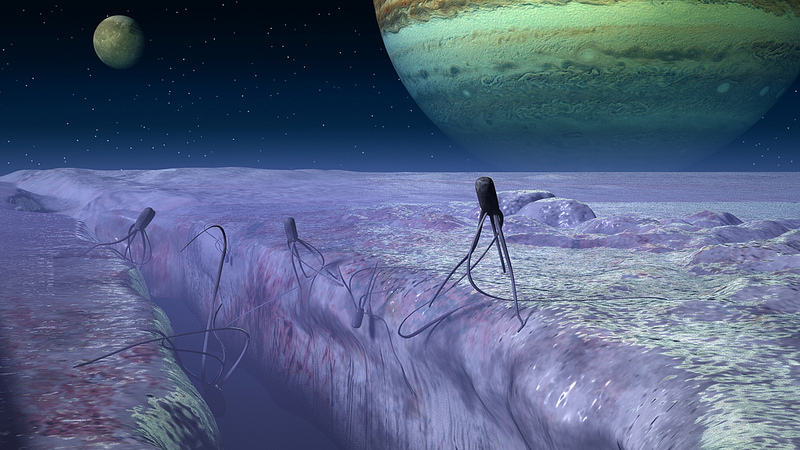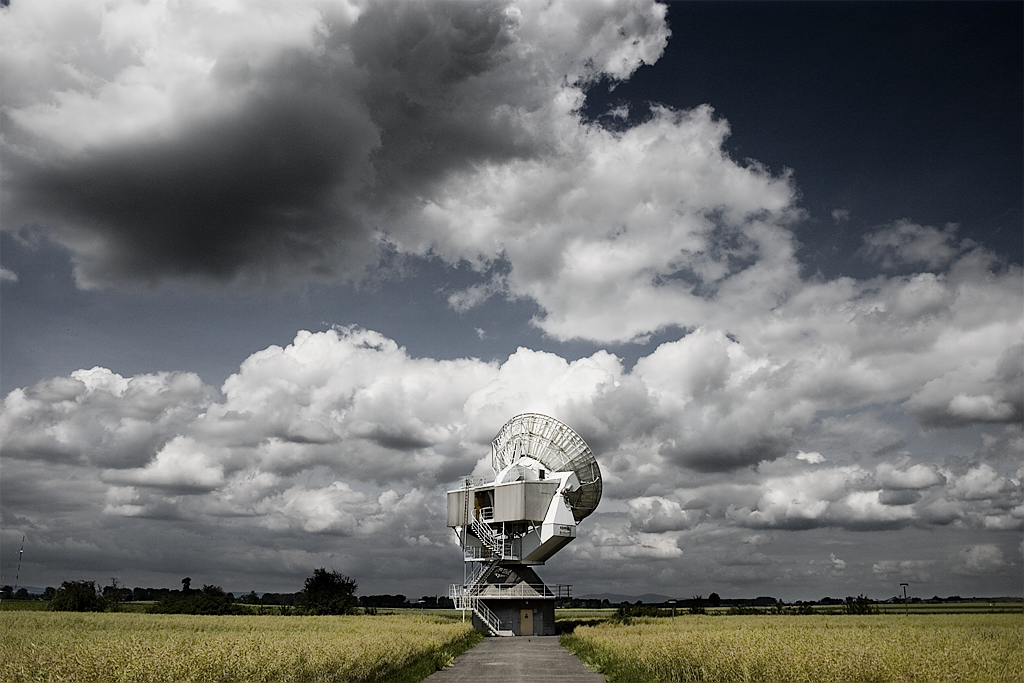 The past few days have been a cosmic convergence of opinions about extraterrestrial life. First, I’ve been interviewing scientists and engineers who think that funding searches for planets that might support life isn’t unreasonable. Second, a neighbor told me he’d read in the New York Times that extraterrestrial life almost certainly had evolved somewhere, some time in the past. Third, I just got a press release from Harvard saying that extraterrestrial life was actually more likely to evolve in the future. Fourth, I read a Nature story about the signatures that extraterrestrial life might impose on a telescopic view of an extraterrestrial planet. Clearly, the cosmos was converging these opinions in hopes that I would write a blog post.
The past few days have been a cosmic convergence of opinions about extraterrestrial life. First, I’ve been interviewing scientists and engineers who think that funding searches for planets that might support life isn’t unreasonable. Second, a neighbor told me he’d read in the New York Times that extraterrestrial life almost certainly had evolved somewhere, some time in the past. Third, I just got a press release from Harvard saying that extraterrestrial life was actually more likely to evolve in the future. Fourth, I read a Nature story about the signatures that extraterrestrial life might impose on a telescopic view of an extraterrestrial planet. Clearly, the cosmos was converging these opinions in hopes that I would write a blog post.
 I’ve written other blog posts about the Searches for ExtraTerrestrial Intelligence and about searches for life regardless of intelligence. I have been respectful but snotty because, as I already said, “crissakes, the universe is jam-packed with philosophy-shattering freakshows, and we’re looking for things we already know exist?”
I’ve written other blog posts about the Searches for ExtraTerrestrial Intelligence and about searches for life regardless of intelligence. I have been respectful but snotty because, as I already said, “crissakes, the universe is jam-packed with philosophy-shattering freakshows, and we’re looking for things we already know exist?”
The scientists and engineers I’m interviewing have some good counter-opinions but I’ll have to think about them some more. The Nature story, by the excellent writer and occasional Guest Poster of LWON, Alex Witze, isn’t opinion at all. The Hubble’s successor, the James Webb Space Telescope, will be able to see not only some nearby habitable planets but also their atmospheres. Those atmospheres could contain signatures of life, so astronomers are compiling lists of what to look for: if exo-life is like earth’s, then oxygen, ozone, ammonia, methane, and sulfur compounds; and if not, then look for any molecules that would be both stable and detectable. The credibility of an idea depends partly on the number of miracles it needs, and this story needs none: Witze quotes one astronomer saying the list of signatures should account for each exoplanet evolving life in its own unique way. (Witze, by the way, continues her streak of quoting women scientists; this story, 80% were women; last time I noticed it was 100%; I asked her about it, she mentioned another 100%er. Keep an eye on Witze: subverting the patriarchy indeed.)
The two remaining items in the convergence need miracles. The press release is on an upcoming paper by astronomers from Harvard and Oxford, who calculate the probability of life evolving during the whole history of the universe. The probability turns out to depend on the masses of stars: huge ones burn out before life can start, small ones last a lot longer than the sun. No one knows whether these small stars have planets that can support life; the astronomers kind of doubt it. Nevertheless, says the press release, because the small stars live so long, “the probability of life grows over time. In fact, chances of life are 1000 times higher in the distant future than now.” “Is Earthly Life Premature From a Cosmic Perspective?” asks the press release. Yes, apparently it is; and though I don’t see the point of the argument, maybe I don’t need to.
The New York Times opinion piece, also by an astronomer, has the title, “There Have Been Aliens,” and backs up the assertion with a carnival of iffy assumptions. As many arguments about extra-terrestrial intelligence do, this one is based on the famous Drake equation: the likelihood of hearing from exo-life depends on the number of stars, the fraction of those with planets, the fraction of that fraction that can possibly host life, the fraction of that fraction of that fraction on which life happened and was intelligent and created technological civilizations that lasted long enough to communicate. The astronomer acknowledges that many of those likelihoods are based on assumptions that are themselves based on an n of 1.0 and so, pfffft. But, he adds, several of the terms of the Drake equation are now known much better and even if the solution is “highly pessimistic,” say, one civilization in 10 billion per planet, the universe has been around so long that it would have had a trillion civilizations. “In other words, given what we now know about the number and orbital positions of the galaxy’s planets,” writes this astronomer, doubting the existence of past civilizations “borders on the irrational.”
Something about the logic in the Harvard/Oxford and NYT opinions I don’t quite get, but my brain power is often not up to dealing astronomical logic. Maybe I don’t trust the reality of numbers you get when you’ve multiplied by the age of the universe or its likely future. But I’ll ignore my intellectual insecurities, take a deep yoga-class breath, feel at one with the universe, and have faith that all assumptions align. I’ll believe for a minute in past or future extraterrestrial life and see what difference that makes. Then I’ll return to my own reality and wonder about the origins of this need to believe in entities that live in the sky, and tell you those atmospheric signatures might nevertheless be interesting.
____________
Art: Inhabitants of Europa, the Jupiter’s moon, taking a radiation bath, by masbt
Photo: by Andy Rudorfer